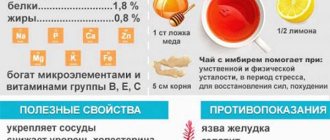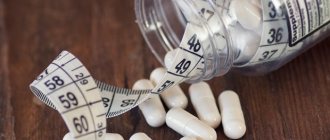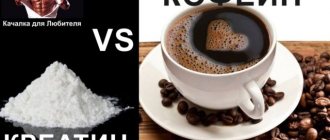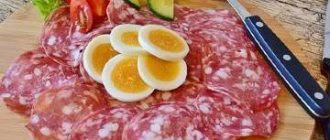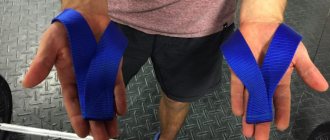Do you want to get rid of excess body weight or go to the gym every day and need a balanced diet? Compose your diet from foods that can provide the body with the necessary energy. But it’s worth choosing food that won’t fill you with excess calories. The idea that without vegetable and animal fats the taste of dishes deteriorates is false. In fact, fats perform a number of functions, which ensures the normal functioning of literally the entire body. But you shouldn't abuse them. In this article we will look at which fat-free foods will bring you the most benefit.
Which diet should you choose?
Let's start with the fact that there is no special diet based on the consumption of fat-free foods. Constant consumption of foods with a minimum amount of calories is considered the most effective method of losing extra pounds in a short period of time. But it is impossible to maintain such a diet for a long time - the lack of fat has a detrimental effect on the health of both women and men.
What foods are called low-calorie?
It is understood that foods require more energy from the body to digest, which minimizes the number of calories consumed.
Factors affecting the calorie content of foods
To obtain energy, a person needs calories.
However, excessive consumption of rich foods leads to adverse consequences:
- gastrointestinal diseases;
- metabolic disorders;
- obesity, etc.
It is necessary to take into account the calorie content of ready-made dishes, weighing the ingredients in dry/raw form. Relevant for people who are losing weight or maintaining their weight category.
Provided that a person has no malfunctions in the functioning of organs and no diseases, then the digestibility of nutrients is:
- proteins – 4.5 kcal/g;
- fats – 9.3 kcal/g;
- carbohydrates – 4.1 kcal/g.
The number of calories and the glycemic index of a product change under the influence of several factors:
- Grinding and mixing: dishes with a puree consistency are absorbed faster and easier by the body with little loss of energy value.
- Cooking: Roasting, baking, steaming and boiling increase the nutritional value.
Meat
First, pay attention to the meat. The basis of the diet is chicken breast and veal, which contain a large amount of healthy protein, which is well accepted by the body. Nutritionists advise eating rabbit as a substitute for fatty meats. Rabbit meat is considered healthy because it contains vitamins B1, B2, B4, B6, B12, PP, K, cobalt, phosphorus, iron, etc.
Fully or partially limited products
A low-fat diet excludes from the diet:
- Products made from flour, fresh wheat bread, pastry/puff pastry products.
- Fatty meats, smoked meats, duck and goose meat, meat products (sausages), fast food products, fatty fish (sea/river), confectionery and pork/beef fat, skin from any meat, lard, bacon.
- Fatty meat and fish broths.
- Pasta, semolina.
- Fried, smoked and salted foods, canned food.
- Fatty dairy/fermented milk products (baked milk, cottage cheese, cream, sweet yogurt, sour cream, fatty cheeses, cheese curds).
- Spicy/fatty snacks, margarine, fatty hot sauces, mayonnaise, herbs, spices, limit the use of butter.
- Confectionery, honey, jam, sugar, chocolate, candy, ice cream.
- As for vegetables, it is necessary to limit the consumption of green peas, eggplant, potatoes, and pickled vegetables.
- Fruits: figs, dates, grapes, bananas, raisins.
- As for drinks, it is not recommended to consume juices from sweet fruits, sweet carbonated drinks, cocoa, tea with milk, and alcohol.
Table of prohibited products
| Proteins, g | Fats, g | Carbohydrates, g | Calories, kcal | |
Vegetables and greens | ||||
| beans | 6,0 | 0,1 | 8,5 | 57 |
| peas | 6,0 | 0,0 | 9,0 | 60 |
| green peas | 5,0 | 0,2 | 13,8 | 73 |
| fried potato | 2,8 | 9,5 | 23,4 | 192 |
| carrot | 1,3 | 0,1 | 6,9 | 32 |
| beet | 1,5 | 0,1 | 8,8 | 40 |
| beans | 7,8 | 0,5 | 21,5 | 123 |
| horseradish | 3,2 | 0,4 | 10,5 | 56 |
Fruits | ||||
| melon | 0,6 | 0,3 | 7,4 | 33 |
Nuts and dried fruits | ||||
| nuts | 15,0 | 40,0 | 20,0 | 500 |
| dried fruits | 2,3 | 0,6 | 68,2 | 286 |
| sunflower seeds | 20,7 | 52,9 | 3,4 | 578 |
Snacks | ||||
| potato chips | 5,5 | 30,0 | 53,0 | 520 |
Cereals and porridges | ||||
| white rice | 6,7 | 0,7 | 78,9 | 344 |
Flour and pasta | ||||
| pasta | 10,4 | 1,1 | 69,7 | 337 |
| noodles | 12,0 | 3,7 | 60,1 | 322 |
| pancakes | 6,1 | 12,3 | 26,0 | 233 |
| vareniki | 7,6 | 2,3 | 18,7 | 155 |
| pancakes | 6,3 | 7,3 | 51,4 | 294 |
| dumplings | 11,9 | 12,4 | 29,0 | 275 |
Bakery products | ||||
| bagels | 16,0 | 1,0 | 70,0 | 336 |
| white bread crackers | 11,2 | 1,4 | 72,2 | 331 |
| wheat bread | 8,1 | 1,0 | 48,8 | 242 |
Confectionery | ||||
| jam | 0,3 | 0,2 | 63,0 | 263 |
| candies | 4,3 | 19,8 | 67,5 | 453 |
Cakes | ||||
| cake | 4,4 | 23,4 | 45,2 | 407 |
Chocolate | ||||
| chocolate | 5,4 | 35,3 | 56,5 | 544 |
Raw materials and seasonings | ||||
| mustard | 5,7 | 6,4 | 22,0 | 162 |
| ginger | 1,8 | 0,8 | 15,8 | 80 |
| mayonnaise | 2,4 | 67,0 | 3,9 | 627 |
| honey | 0,8 | 0,0 | 81,5 | 329 |
| sugar | 0,0 | 0,0 | 99,7 | 398 |
| vinegar | 0,0 | 0,0 | 5,0 | 20 |
Dairy | ||||
| milk 3.2% | 2,9 | 3,2 | 4,7 | 59 |
| condensed milk | 7,2 | 8,5 | 56,0 | 320 |
| kefir 3.2% | 2,8 | 3,2 | 4,1 | 56 |
| cream 20% (medium fat content) | 2,8 | 20,0 | 3,7 | 205 |
| cream 35% (fat) | 2,5 | 35,0 | 3,0 | 337 |
| sour cream 25% (classic) | 2,6 | 25,0 | 2,5 | 248 |
| Ryazhenka | 2,8 | 4,0 | 4,2 | 67 |
Cheeses and cottage cheese | ||||
| cheese | 24,1 | 29,5 | 0,3 | 363 |
| cottage cheese 18% (fat) | 14,0 | 18,0 | 2,8 | 232 |
Meat products | ||||
| fatty pork | 11,4 | 49,3 | 0,0 | 489 |
| salo | 2,4 | 89,0 | 0,0 | 797 |
| bacon | 23,0 | 45,0 | 0,0 | 500 |
| ham | 22,6 | 20,9 | 0,0 | 279 |
| pork stew | 13,0 | 35,0 | 0,0 | 367 |
Sausages | ||||
| smoked sausage | 28,2 | 27,5 | 0,0 | 360 |
Bird | ||||
| fried chicken | 26,0 | 12,0 | 0,0 | 210 |
| duck | 16,5 | 61,2 | 0,0 | 346 |
| goose | 16,1 | 33,3 | 0,0 | 364 |
Eggs | ||||
| fried egg | 11,9 | 15,3 | 0,7 | 192 |
Fish and seafood | ||||
| Red caviar | 32,0 | 15,0 | 0,0 | 263 |
| cod roe | 24,0 | 0,2 | 0,0 | 115 |
| cod (liver in oil) | 4,2 | 65,7 | 1,2 | 613 |
Oils and fats | ||||
| peasant unsalted butter | 1,0 | 72,5 | 1,4 | 662 |
| vegetable-fat spread | 0,0 | 40,0 | 0,0 | 360 |
| cod liver oil | 0,0 | 99,8 | 0,0 | 898 |
| solid confectionery fat | 0,0 | 99,8 | 0,0 | 898 |
| rendered pork fat | 0,0 | 99,6 | 0,0 | 896 |
Alcoholic drinks | ||||
| white dessert wine 16% | 0,5 | 0,0 | 16,0 | 153 |
| vodka | 0,0 | 0,0 | 0,1 | 235 |
| cognac | 0,0 | 0,0 | 0,1 | 239 |
| liquor | 0,3 | 1,1 | 17,2 | 242 |
| beer | 0,3 | 0,0 | 4,6 | 42 |
Juices and compotes | ||||
| jelly | 0,2 | 0,0 | 16,7 | 68 |
| * data is per 100 g of product | ||||
Fish
Fish in the diet is a valuable source of protein, calcium and phosphorus, which should not be abandoned under any circumstances. Products without fat in the diet are boiled or baked fish. Nutritionists include the following low-fat varieties:
- hake;
- river perch;
- pollock;
- cod;
- pike;
- flounder.
Salmon meat is considered an ideal dietary dish. But regularly preparing such a product will be too expensive for the family budget. Among all fish, salmon has a high content of healthy protein and at the same time a low amount of fat (1.7 grams of fat per 100 grams of product).
Low Carb Cereals and Flours
Almond flour
Carbohydrates: 6 grams per ¼ cup
Made from finely ground almonds, Paleo-worthy almond flour will help you make cookies or other baked goods that will be much healthier for your abs.
Good to know.
In addition to helping eliminate some carbohydrates from your diet, almond flour is high in protein, heart-healthy monounsaturated fat, and much richer in the antioxidant vitamin E than wheat flour.
Shirataki noodles
Carbohydrates: 0 grams per 100 grams
These translucent gelatinous noodles are made from the crushed roots of the Asian plant Amorphophallus konjac. Shirataki is predominantly composed of plant fibers called glucomannan, which ensures a complete lack of carbohydrate load. Shirataki noodles have their own unique taste, which is difficult to describe, but they perfectly absorb the flavors of other dishes and go well with various seasonings. Before cooking, rinse the noodles thoroughly with water, then briefly plunge them into boiling water.
Good to know.
Preclinical studies show that glucomannan normalizes cholesterol levels and fasting blood sugar, making it beneficial for people with type 2 diabetes and prediabetes.
Amaranth
Carbohydrates: 23 grams per ½ cup
Cereals will never be the lowest carb item in the supermarket, but South African amaranth contains small amounts of them. Like quinoa, amaranth is a source of essential amino acids that nourish your muscles. Amaranth becomes sticky after cooking as it releases starch. Try it as an alternative to breakfast cereal.
Good to know.
Gluten-free cereals contain a large amount of magnesium, a microelement necessary for normal metabolism.
Other low-carb grains:
- Hazelnut flour
- Coconut flour
- Peanut flour
- Wheat germ
Dairy
The dairy diet is not like the others, as it does not bring the body to complete exhaustion. This is due to the fact that frequent consumption of milk products makes up for the deficiency of calcium, vitamin D, B2, B12 and phosphorus to the maximum.
When consuming milk, metabolism accelerates and the rate of burning fat deposits increases. Try to choose dairy products without fat, for example, 10% sour cream or 1% fat milk. Hard cheese can also be called dietary if the amount of fat in the composition does not exceed 15%. Manufacturers offer their consumers a large selection of low-fat kefir and cottage cheese. Yogurt, kefir or sour cream 0% fat is an excellent base for dressing a side dish or sauce for a dish. The combination of dairy products and berries is considered excellent; it will bring maximum benefit to the body of an adult and a child.
List of foods that contain the most fat
Many people cut down on the consumption of sweets and fast food, but at the same time season their food with mayonnaise every day. This sauce is not inferior in fat content to cakes and chocolate, so this approach to nutrition is incorrect.
Fans of mayonnaise defend this product by the fact that it contains fatty acids and vitamins that are certainly beneficial for the human body. But at the same time, mayonnaise contains up to 80% fat, in addition, its calorie content reaches 800 cal per 100 grams.
Advice! Fans of this sauce are strongly recommended to prepare it themselves. Mayonnaise prepared at home is less caloric and harmful, but it can be stored in the refrigerator for no more than 18 hours, which is not very convenient. Also, the fatty sauce can be replaced with its dietary version.
Fatty foods - list:
- oil (vegetable fats, amino acids);
- sour cream (up to 60% fat content, the highest levels are in village sour cream);
- nuts (vegetable, content - up to 70% depending on the variety of nuts);
- meat (the highest rates are in red meat - pork, beef);
- cheese (this product contains a lot of vitamins A and B, proteins, phosphorus, but it also contains up to 70% fat);
- chocolate (per 100 grams of product there is an average of 40 grams of harmful substances);
- potato chips (they contain unhealthy fats).
Despite the fact that the products on this list are very fatty, not all of them are harmful to the body. Walnuts, for example, contain polyunsaturated fats enriched with acids. They are beneficial for both the cardiovascular system and brain activity.
The fattest foods, the list of which is presented above, are not so dangerous as to completely exclude them from the diet.
Important! Fatty fish are also very healthy. They, like nuts, contain amino acids, omega-3s and vitamins. These include: trout, herring, salmon, anchovies, sardines. It is well absorbed by the body. Therefore, such types of fish must be present in the human diet.
Cereals
Buckwheat, oatmeal, millet, brown rice and other cereals are indispensable elements of the diet menu for those who dream of a sculpted body.
The fat content in cereals is low (from 1 to 2%). The most high-calorie cereal is made from oats, since the amount of fat in it is up to 6%. These products contain large quantities of complex carbohydrates, which add strength and energy during constant physical activity. When you eat porridge in the morning and at lunch, the feeling of hunger goes away for a long time.
Healthy vegetables
A healthy diet is based on eating vegetable dishes. Nutritionists allow you to eat them in almost unlimited quantities without fear of gaining extra pounds. The exception is potatoes. Due to the high concentration of starch in its composition, potatoes contribute to weight gain.
All types of vegetables contain no more than 1 gram of fat per 100 grams of product. Boiled or steamed vegetables are a healthy side dish for literally any dish. List of the healthiest foods without animal fat:
- Carrot.
- Spinach.
- Pumpkin.
- Onion.
- Broccoli).
- Lettuce leaves.
- Celery.
- Tomatoes.
- Watermelon.
Fruits
Fruits also appear in the group of foods with the least amount of fat, except for avocados and olives. Frequent consumption of fruits in the first half of the day helps not only to cope with fat deposits, but also prevents weight gain. Just remember that fruits contain a lot of sugar.
List of fat-free foods (fruits):
- Oranges.
- Grapefruits.
- Bananas.
- Apples.
- Apricots.
- A pineapple.
- Cherries.
Mushrooms
Many diets include the use of mushrooms as an alternative to meat. Due to the low fat content in mushrooms, they are a very low-calorie product. There are 20–40 kcal per 100 grams. In addition, a small portion of mushrooms nourishes the body and eliminates the feeling of hunger.
Mushroom dishes allow you to get rid of excess weight without “breakdowns” and frequent mood swings. The main problem with such a diet is poor quality and harmful mushrooms, the use of which leads to unpredictable results, for example, poisoning.
Pasta
Pasta cannot be called a real dietary product, but the amount of fat in it is about 0.4 grams per 100 grams of product. Italians say that eating pasta does not actually make you gain weight. Pasta lovers gain weight from frequent consumption of fatty sauces, with which pasta is often served. Pasta consists mainly of carbohydrates, and sauces consist of fats. For those who want to lose weight, pasta and sauce should not be combined!
In order to lose a couple of extra pounds, do not deny yourself your favorite foods. The basic rule of healthy eating is not to drink tea/coffee or eat after 6 pm. In fact, it is quite possible to prepare low-fat and tasty pasta with stewed vegetables, mushrooms or with a light sauce without heavy cream.
Low Carb Plant Proteins
Tofu
Carbohydrates: 3 grams per 100 grams
Tofu is not just for vegetarians! It offers low-cost, low-carb protein to meat eaters looking for a meat-free evening. Tofu is not a very tasty food, but if you add it to vegetable side dishes or other dishes, it will quickly absorb their flavor. Try it as a source of cheap protein by quickly frying the tofu in a pan or marinating it like you would with meat and throwing it on the grill.
Good to know.
Isoflavones, components of soy from which tofu is made, can lower blood pressure.
Tempe
Carbohydrates: 9 grams per 100 grams
Tempeh is made from fermented soybeans, making it an excellent source of protein. The flavor can be described as smoky, nutty and a little earthy with a mushroom flavor. Try adding tempeh to chili, tacos, soup and pasta sauce.
Good to know.
As a fermented food like yogurt or kefir, tempeh contains very beneficial cultures of probiotic microorganisms.
Pinto beans
Carbohydrates: 18 grams per ½ cup
Among the beans, Pinto beans contain the fewest carbohydrates but still provide you with an impressive 12 grams of plant-based protein per serving. You can use them as a protein booster in salads and scrambled eggs.
Good to know.
A large amount of plant fiber reduces the peak rise in blood sugar caused by carbohydrates in food.
Pumpkin seeds
Carbohydrates: 5 grams per 30 grams
Pumpkin seeds are an excellent whole food source of protein, providing nearly 7 grams of protein per serving. Note that pumpkin seeds contain no sugars among their carbohydrates, making them an even better source of extra protein in salads, cereals, yogurt or cottage cheese.
Good to know.
You can use pumpkin seeds as a source of zinc, a known testosterone booster.
Other low-carb plant proteins:
- Hemp seeds
- Edamame
- Unsweetened soy milk



